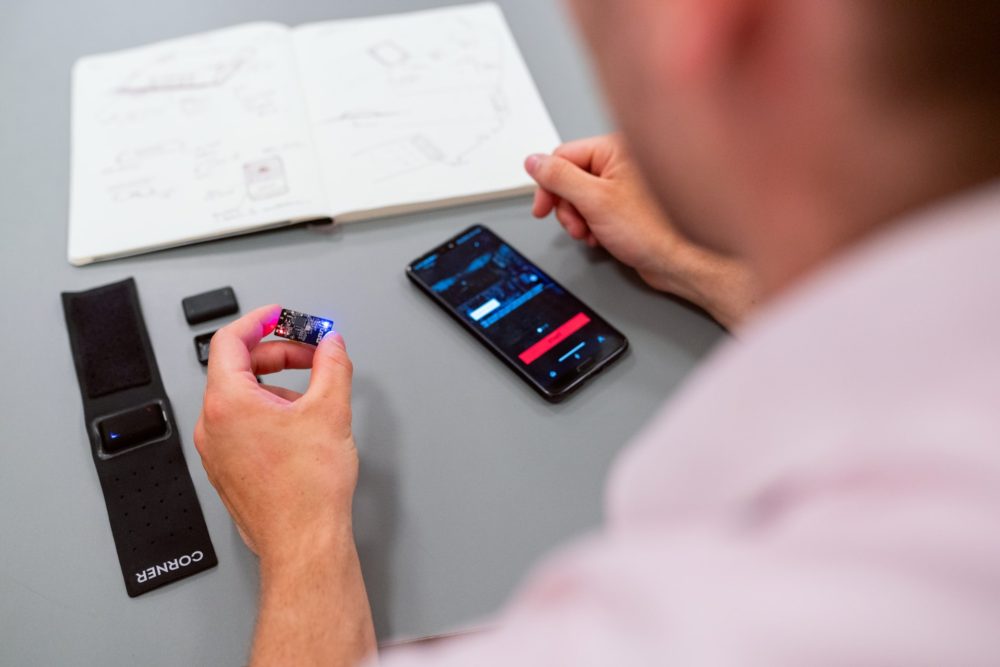Innovative Communication Technology: Cloud-Based Apps
Innovative communication technology: The cloud movement continues to grow, and we are seeing more and more services going that way. Many companies providing cloud solutions have affordable services geared towards small businesses that cannot afford a fully-integrated system for running day-to-day activities.
Cloud-based services and apps are also accessible on mobile devices — making it highly convenient when collaborating on projects and communicating with your team. With real-time editing capabilities and other advanced sharing options, many businesses are opting for cloud intranet software due to its flexibility.
Robust Mobile Devices
One of the biggest innovative communication technology trends is the power of mobile devices. They have changed business for the better, similar to what the desktop computer did in the early 80s. Today’s smartphones are more powerful than computers were just a few years ago — and this has created opportunities for businesses.

With a bring-your-own-device program in place, you can establish better internal communication in the workplace. Employees can use their personal devices at work and be just as efficient. The real benefit here is that employees enjoy using their own devices — and the company benefits by having easy reach to employees at all times.
Unified Communications
Unified communication is the integration of real-time and near real-time communication systems. This includes the integration of chat services, phone, video conferencing, messaging, feedback and commenting systems, and others. Unified communications also provide a consistent user interface and experience across a range of devices and media types.
By bringing together voice and data, a unified communication system reduces infrastructure costs and contains more features for a more responsive experience. It makes everyone’s life simpler and enables management to quickly see when employees are available to chat.
New Innovative Communication Technology Platforms
Business apps have opened even more lines of communication. For example, Slack is easy to learn, the links and file uploads show up in order and all the conversations are searchable for later. Also, the ability to create a Google Hangout from inside a chat room is a cool and useful feature.
Basecamp makes it easy to share files and stay in the loop on projects and with client information. It’s easy to use and a go-to for getting team communication up to and running.
Wrike is a task and project management tool, with the ability to easily “@” message team members through tasks and the activity stream, bringing context to the conversation.
Also, some of the apps/platforms mentioned previously, allow people to communicate easily regardless of time zone or language barriers.
Your IT Consultant is the best source for information about business programs and platforms that will be ideally suited for your company.
Wearable Technology
The first instance of wearable technology was a hands-free mobile headset launched in 1999, which became a piece of tech synonymous with city workers. It gave businesspeople the ability to answer calls on the go, most importantly, while driving.
Ten years ago, the idea that you could make a video call from an item other than a phone would have been a sci-fi dream. Now, with smartwatches, audio sunglasses, and other emerging wearable technology, these capabilities are a part of our daily lives.
5G
5G, the 5th generation of mobile network, promises much faster data download and upload speeds, wider coverage, and more stable connections. These benefits will bring about significant improvements in communication. Instantaneous communication will be possible and those patchy frustrating video calls will be a thing of the past.
The average 4G transmission speed currently available for our smartphones is around the 21 Mbps mark. 5G will be 100 to 1000 times faster. The Consumer Technology Association notes that at this speed, you could download a two-hour movie in just 3.6 seconds, versus 6 minutes on 4G or 26 hours on 3G. The impact of 5G will go far beyond our smartphones as it will allow millions of devices to be connected simultaneously.
Looking ahead, there is already buzz about 6G. Although it’s still in basic research and around 15-20 years away, it’s interesting from an innovation point of view. 6G will form the framework of the connected utopia we aspire towards, and with it will come untold improvements in the speed and consistency of our communication.
 Web Portal
Web Portal
You can utilize a communication management portal to hold all of your communication data for optimized workflows. Communication management portals allow you to engage with your customers across multiple channels in whatever manner they prefer. This enables more timely customer service responses and resolutions to problems.
Deliberate Communication
Although technology has made innovative communication technology instantaneous, it has also made planning communication with remote employees more important. Companies that take advantage of telecommuting and virtual offices need to consistently touch base with remote employees and groups to ensure they’re all working toward the same goals.
Even if you work in a common office, instantaneous communication cannot replace specific meetings where big decisions are discussed. Communication is only 7 percent verbal and 93 percent non-verbal. The non-verbal component is made up of body language (55 percent) and tone of voice (38 percent)
As we all know from text messaging, the written word can sometimes be misinterpreted (sarcasm, for example, doesn’t translate well); without tone and inflection, messages can lose their meaning. As you can see from the figures above, phone calls are not as effective as in-person meetings. In fact, more than half of the message is lost during a call.
Skype isn’t just popular because it’s inexpensive, when you can see who you’re talking to you the communication is more effective. Your IT Representative will be able to help you safely install the equipment you need for the most effective business communication.
The Instant Distraction
It’s quite common for employees to wear headphones in offices, but if you think most of them are listening to music, think again. Most are blocking out the office chatter, the ringing phones, and the incessant “dings” of instant messages. Communication tools that were designed for better productivity, can make it harder for employees to tend to one task at a time. When concentration is constantly being interrupted it’s difficult to get anything done.
A study found that 82 percent of all interrupted work is resumed on the same day. But, it takes an average of 23 minutes and 15 seconds to get back to the task. In a study, people were assigned a typical office task: answer a set of e-mails. In one condition, they were not interrupted. In another condition, they were interrupted by phone calls and SMS. Using a NASA workload scale (which measures various dimensions of stress), the study found that people scored significantly higher when interrupted. They had higher levels of stress, frustration, mental effort, the feeling of time pressure, and mental workload.
Major Trends Of Workplace Innovative Communication Technology
Communication in the workplace was considerably streamlined with the introduction of email. It aided in simply saving the time of scheduling meetings, physically seeking out colleagues who are not at their desks at opportune times, or being required to be present at a meeting that doesn’t call for your input.
The benefits of email are numerous and obvious to those who were of working age when it was introduced to the workplace. The millennial generation will never know the frustrations of long, drawn-out, company-wide meetings. Instead of waiting for a chance to speak at a table of numerous other people, you can “reply all” to the sender and add your input to be read at all participants’ leisure.
Not only did email create new communication highways between colleagues and business partners, but with their customer base as well. It’s become a powerful marketing tool, and many businesses now use email to target specific audiences and grow their customer base.
The perks of email and other forms of electronic messaging is that they are instantaneous. Documents can be submitted and signed for approval at any time of day and are no longer tied to business hours. Additionally, business is more easily conducted globally without time zones becoming an issue. It’s allowed for a whole new level of flexibility in business that wasn’t previously available.
 The Evolution Of Communication
The Evolution Of Communication
Following the implementation of email, tech-savvy innovators recognized the ready market of instant messaging. Nearly all email accounts now offer a direct messaging app within their software.
For example, Google offers Google Hangouts, which provides real-time messaging between you and your co-workers. Within Google Hangouts, you can share your screen for information exchanges and presentations, and you can also video chat if you are in need of face-to-face time with a client or employee.
Messaging applications, such as Slack, are being implemented into the common workplace. The software can be accessed on your desktop, as well as your smartphone. The app provides a platform for messaging the company as a whole in group chats or private messages between select people and groups. You can tag one another to make sure that your messages are received by individuals and create a space for engagement for remote employees. You can also attach files and photos for quick referencing during the conversation.
An added benefit to using innovative communication technology is enabling you to communicate with customers without having to host a call center. By implementing a LiveChat option on your website, you can answer their questions without delay and foster a beneficial relationship from the first point of contact.
Innovative Communication Technology Challenges
One of the downfalls of being so easily connected and contacted is being tied to your mobile phone. Luckily, most apps and software offer a silencing tool to mute notifications on your weekends or while on vacation. The hazard of the free flow of information is feeling the need to respond as messages filter in. Setting business hours for yourself will enable you to enjoy your time outside of your preset office hours to foster a healthy work-life balance.
The use of social media is also currently prevalent in business. It is wise to keep in mind that you are easily found on social media and you should adjust your privacy settings so that your employer is not able to access your private pages. You can be responsible for the things that you post but not for others’ actions on your social media profiles. To protect yourself, it is best to keep your personal social media private and separate from the people you work with.
Another challenge of electronic communication is the loss of the human element that allows us to interpret nonverbal messages written words often fail to relay. Messages that are ambiguous or vague can be left open for interpretation, causing communication breakdowns and the potential for mistakes. Contradictorily, messages that are too direct or blunt can feel harsh or intimidating.
Due to our current messaging systems’ instant nature, there is not always an effective delay in responses when feeling emotional or upset. This can have negative impacts on our communication in the workplace. Be aware of your emotional state when responding in a messaging app or via email to ensure that your message is not construed.

Conclusion
Technology is an ever-evolving concept. History indicates that technology has been continually expanding, which is highly beneficial for better communication. Claiming that communication is at its highest peak can be a wrong statement. Every other day a new form of messaging application comes into existence. This clearly shows that there is a larger room for improvement. Let us know your views on how technology has improved communication.



 Web Portal
Web Portal The Evolution Of Communication
The Evolution Of Communication